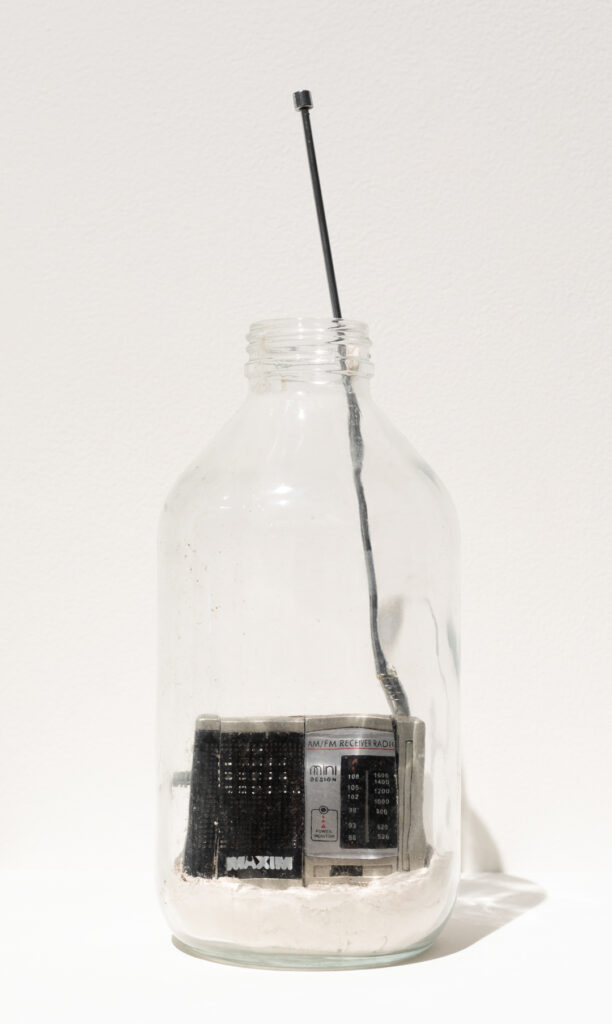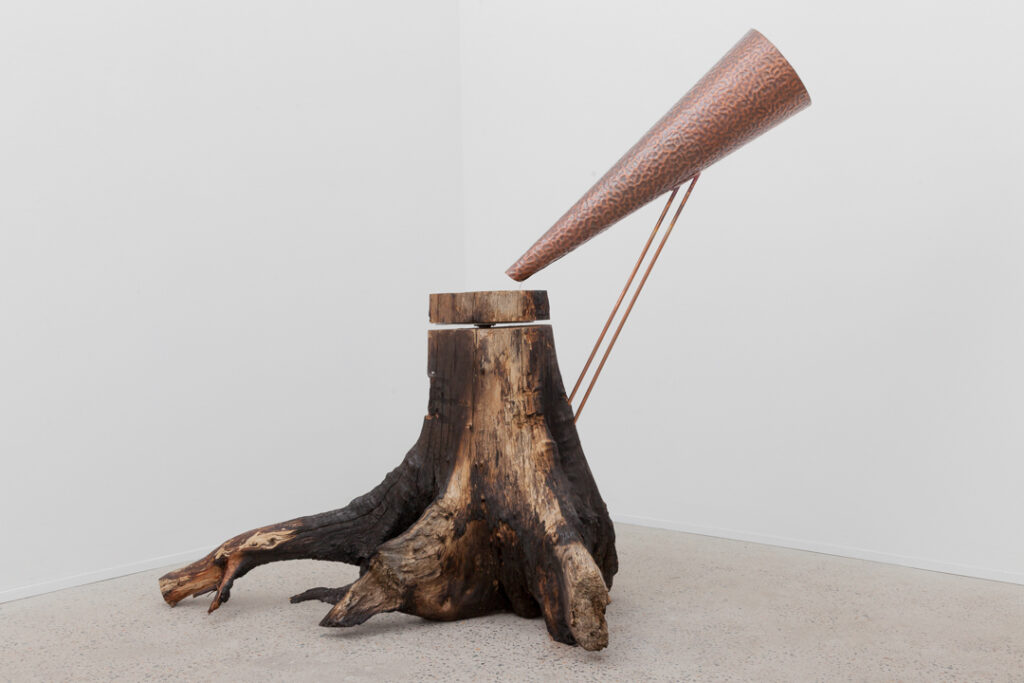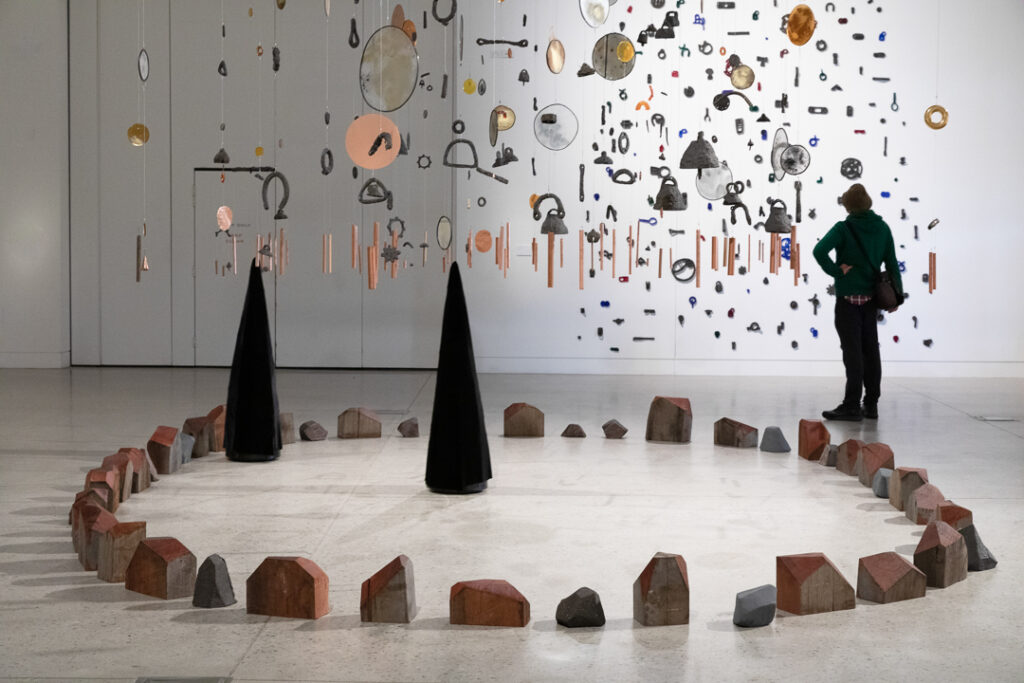
Image 9 – Vicky Browne Work/Play mixed media, dimensions variable 2020 (version) image Silversalt Photography
Vicky Browne creates soundful works we can hear with our eyes.
Sound is as much in the dirt as it is in the air. This may be a strange thing to say since sound needs air to have resonance. However, I think most of us experience materials, matter and objects as much through vision or tactility as we do through sound. When considering this, sound is present in all material, matter and objects whether audible or not. For example, we can understand wood not only through sight or how it feels to touch but also how it sounds for instance when we drum our fingers on a wooden desktop, it informs our understanding of wood whether we are aware of this or not. Sound helps to form knowledge and the experience of knowing a thing. For this reason, even if an object is inaudible it is sound full.
- Image 1 – Vicky Browne Tape Recordings cassette tape motor metal ceramics 95 x 45 cm 2020 image Silversalt
- Image 2 – Vicky Browne Bottled Radio transistor radio bottle polymer clay 30 x 10 x 5 cm 202, image Silversalt
A Material Turn
The sound installations and objects in my practice sit within a current material turn in contemporary arts, particularly in media arts. Expanded definitions of media within media art theory connect to materiality, ecologies and matter in a networked way. We can see this in Doughlas Khan’s expanded definitions of energies, Jussi Parikka’s consideration of geology as media and Kate Crawford travelling to a mining site in Papua New Guinea to write about AI. These expanded definitions situate media within the dirt, ecology and networked systems from whence it is derived.
Away from the sleek packaging of a smartphone writers, artists and media theorists are getting their hands dirty and calling it media. This material turn is not surprising given media itself is increasingly materially embedded into our daily lives connecting to the post-Anthropocene and the post-digital age we are in. Sound within this material turn is interconnected, networked and complex. For example, in my practice, customised sound media is simultaneously connected to both domestic and cosmic spaces. Micro and macro considerations are presented from the sound of everyday objects to the representation of expansive space, my work is an attempt to present complex material networks and ecosystems through the re/positioning of sound.
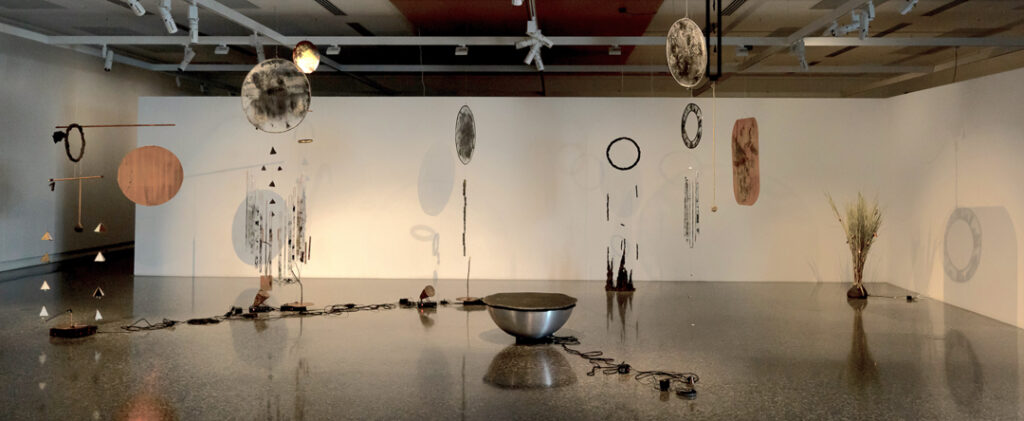
Image 3 – Vicky Browne Cosmic Noise glass turntables wood ceramics metal electronics Dimensions variable 2018 (ongoing) image: Murray Art Museum Albury (MAMA) Jules Boag for Material Sound exhibition
Experimental Studio Practice
I use sound in my practice as a material tool to form an understanding of how we know and experience a thing considering how sound resides within complex systems of materiality. My work often focuses on domestic, or everyday encounters with materials. It is lo-fi, speculative, experimental and D.I.Y. Studio strategies include explicitly revealing sounds within objects or materials through the creation of crafted objects, repositioning or resituating sound within materials or experimenting with technology that produces sound to consider its impact on our lives, politically, socially and historically.
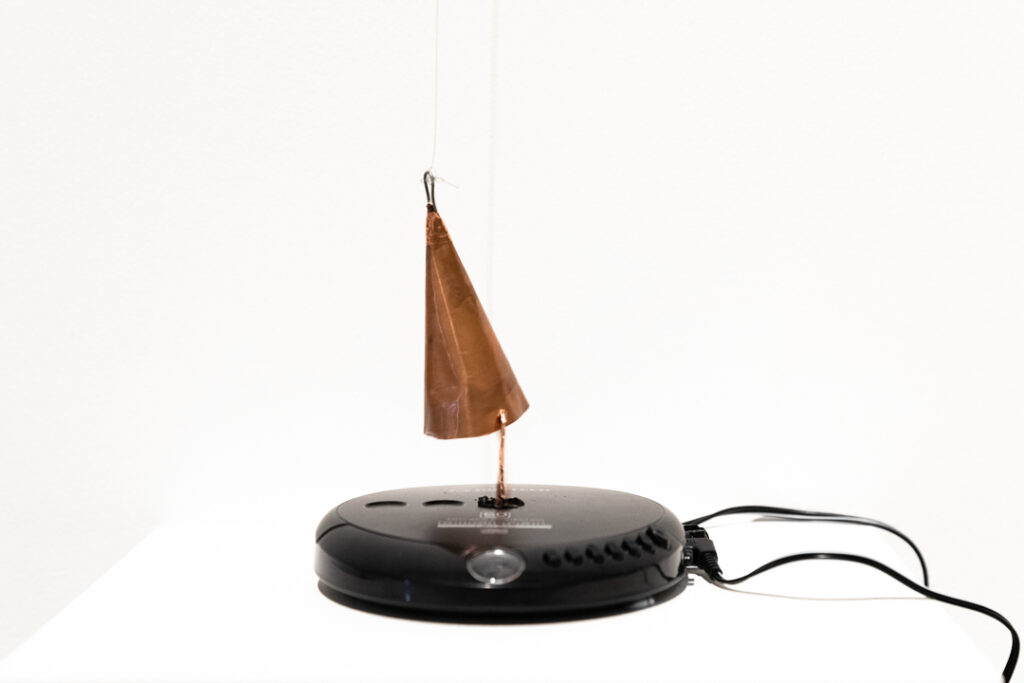
Image 4 – Vicky Browne Cosmic Noise Disruption, CD player speaker copper, Dimensions variable 2022 (version) Image Silversalt
The Inaudible, Audible Object
Sound is always present. We can’t turn off our ears. Even wearing earplugs or noise-cancelling headphones sound is present as we become aware of the noise of our own bodies. The physical presence of sound is made tangible not only through audible physical vibrations but also through how sound is perceived. This is something explored in my practice for example crafted twigs or coins into recognisable audio records (Images 5 and 6) or the strands of discarded cassette tape made into a vibrating wall hanging (image 1) are not audible yet are sound full. Both works exploit and reference shapes and technology associated with sound. This association speaks to and reveals the history of the material, media and our memories. For instance, vinyl records have transitioned from ubiquitous to niche or rarefied. These associations also directly critique the environmental impact of materials, vinyl, in particular, has a devastating environmental footprint as it involves a highly toxic production process and is not recyclable.
Sound is routinely re-situated or repositioned within objects. For example, in image 7 the gramophone is reimagined from a tree stump that sounds like a car crash when the copper cone (recycled from a1970’s rangehood) is played upon the surface of the stump. The material (tree) is literally screaming seemingly at odds with the hippiesque aesthetics of the object.
- Image 5 – Vicky Browne Sticks and Glue twigs wood and glue 12inch image Vicky Browne 2008
- Image 6 – Vicky Browne The Sound of Money, Australian coins solder 12inch image Vicky Browne 2008
- Image 7 – Vicky Browne Gramophone wood copper motor dimension 150 x 150 approx 2013 image: Docqment
Crafting Sound Craft
Artwork that situates sound within traditional craft techniques repositions sound to create meaning/s. In my practice, the use of experimental lead-light glass, ceramic hand building, metalwork, casting, furniture making and textiles critique the often sleek and highly produced packaging of sound technology where the hand has been removed. The inclusion of the handmade within media compels the audience to consider human production, raw materials and value within sound technology. For example, the work Man Machine (image 7) consists of two rocking domestic furniture-like objects that reference mid-century design. As the embedded turntables play a counterweight swings around causing the furniture to rock back and forth endlessly scratching the needle over the vinyl, glitching Kraftwerk’s Man Machine track into a neverending loop. The work speaks to the sound history of sampling, the materiality of sound, the history of transmission and the human hand within production.

Image 8 – Vicky Browne Man Machine Kraftwerk record turntable copper wood. dimensions variable 2022 (version)
Lifting the Veil: Technology and Material Connections
The way sound technology is crafted and presented in my work often reveals or critiques the social impact and implications of the technology itself. There is a history of artists using (or misusing) technology in order to reveal its inner workings, history and social impact. For example, the recent sound installation Work/Play (Image 9) involves badly disguised robot vacuum cleaners roving around a fenced-off area playing hand-crafted chimes. The work is entertaining as visitors stand mesmerised by the chance ‘playing’ of the chimes when activated by the machines. However, there is also a sinister undercurrent within the work. The vacuum cleaners with their black hats while looking comical are not friendly. The question of who is working for who is a central message of the work. Are we being tricked by the mesmerising tinkling of the chimes while the robots are tracking our movements and collecting data for an unknown entity?
Endless Endings
Sound artists who position sound within materiality (such as Peter Blamy, Ross Manning, and Pia Van Gelder) critically scrutinize wicked problems relating to our interconnectedness to material/matter – considering ecological networks and the state of degradation we currently reside in. The endless sound loops, cracks and disrupted noise within their work critique what it is to be human at a time of our own ending.
About Vicky Browne
 Vicky Browne is an installation artist who utilises everyday objects such as walkmans, iPods, clothing and furniture to comment on Western systems of consumption and networked relationships to ecologies. Browne often manipulates the familiar using traditional craft methods (such as knitting or weaving), and she regularly employs found or produced sound. Browne completed a Master of Visual Art at Sydney College of the Arts in 2010 and her work has been exhibited at Artspace, Sydney; Artspace, Auckland, New Zealand. Exhibitions include Living in the Ruins of the Twentieth Century, UTS Gallery, Sydney, Sound Full: Sound in Contemporary Australian and New Zealand Art, City Gallery Wellington, New Zealand and Material Sound at the Black Mountain College Museum and Art Centre Asheville NC in 2018. Vicky Browne also maintains a collaborative practice with musician Darren Seltmann. Together, they exhibited at MONA FOMA, Hobart, and completed a residency at Artspace Sydney 2014. Vicky Browne was announced the winner of the 2013 Fauvette Loureiro Memorial Artists’ Travel Scholarship Prize and completed a residency at the 18th Street Art Centre in Santa Monica in 2014. Browne is currently coordinating the First Year Foundation program at Sydney College of the Arts (The University of Sydney). A major survey of her practice opened at the Blue Mountains Cultural Center (NSW) on September the 9th 2022. Visit www.vickybrowne.com and follow @vickybrowne.
Vicky Browne is an installation artist who utilises everyday objects such as walkmans, iPods, clothing and furniture to comment on Western systems of consumption and networked relationships to ecologies. Browne often manipulates the familiar using traditional craft methods (such as knitting or weaving), and she regularly employs found or produced sound. Browne completed a Master of Visual Art at Sydney College of the Arts in 2010 and her work has been exhibited at Artspace, Sydney; Artspace, Auckland, New Zealand. Exhibitions include Living in the Ruins of the Twentieth Century, UTS Gallery, Sydney, Sound Full: Sound in Contemporary Australian and New Zealand Art, City Gallery Wellington, New Zealand and Material Sound at the Black Mountain College Museum and Art Centre Asheville NC in 2018. Vicky Browne also maintains a collaborative practice with musician Darren Seltmann. Together, they exhibited at MONA FOMA, Hobart, and completed a residency at Artspace Sydney 2014. Vicky Browne was announced the winner of the 2013 Fauvette Loureiro Memorial Artists’ Travel Scholarship Prize and completed a residency at the 18th Street Art Centre in Santa Monica in 2014. Browne is currently coordinating the First Year Foundation program at Sydney College of the Arts (The University of Sydney). A major survey of her practice opened at the Blue Mountains Cultural Center (NSW) on September the 9th 2022. Visit www.vickybrowne.com and follow @vickybrowne.


